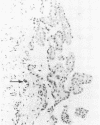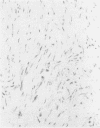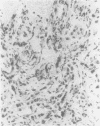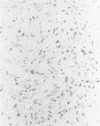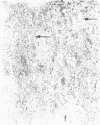Abstract
In an attempt to distinguish reactive from neoplastic mesothelial proliferation, the histological material and clinical records of 153 patients on whom open or closed pleural biopsies were performed during 1976 were reviewed. In six of the 10 patients subsequently shown to have malignant mesothelioma the specimens from closed pleural biopsy had been reported as negative or equivocal but in retrospect showed changes not observed in reactive pleurisy. These included papillary mesothelial proliferation, exfoliated papillae, sheets of atypical mesothelial cells, and abnormal fibroblastic proliferation. In contrast, in inflammatory conditions the mesothelial lining was usually replaced by granulation tissue, although sheets or clumps of exfoliated mesothelial cells were often present in the corresponding pleural fluid clot. Some multilayering of parietal mesothelium was occasionally seen in chronic pleurisy and around metastases.
Full text
PDF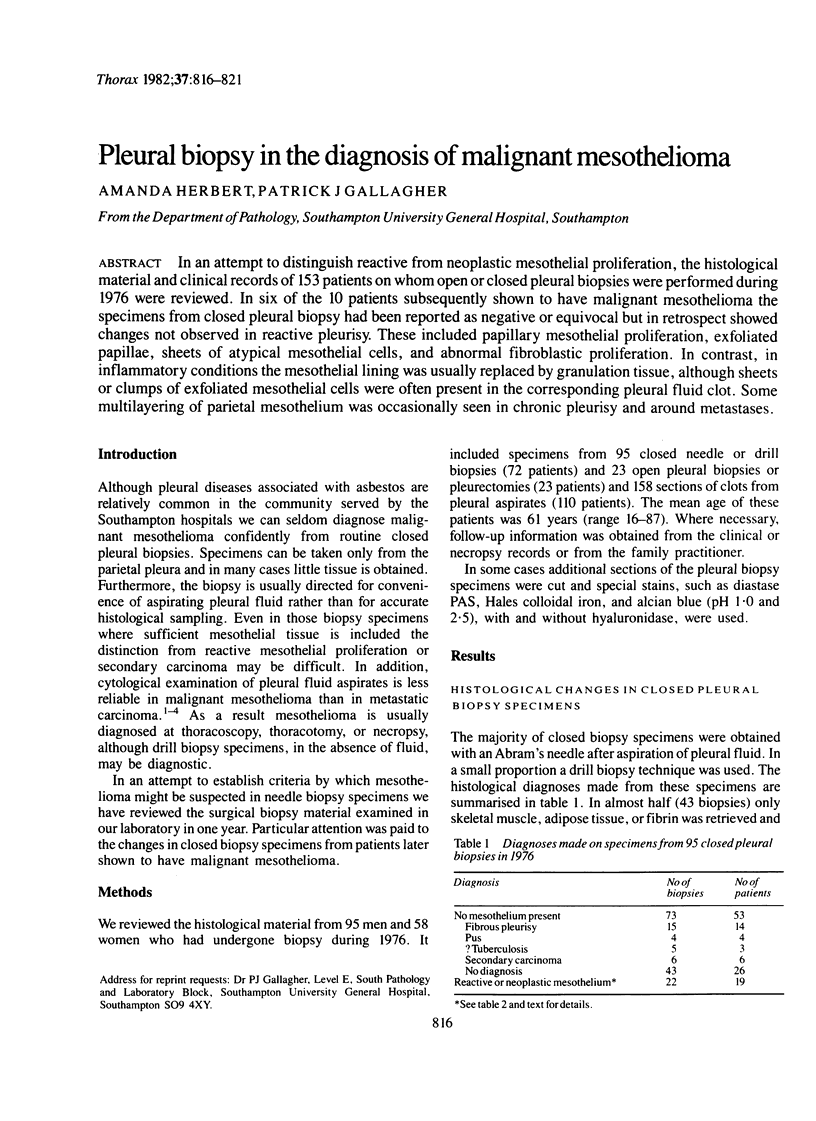
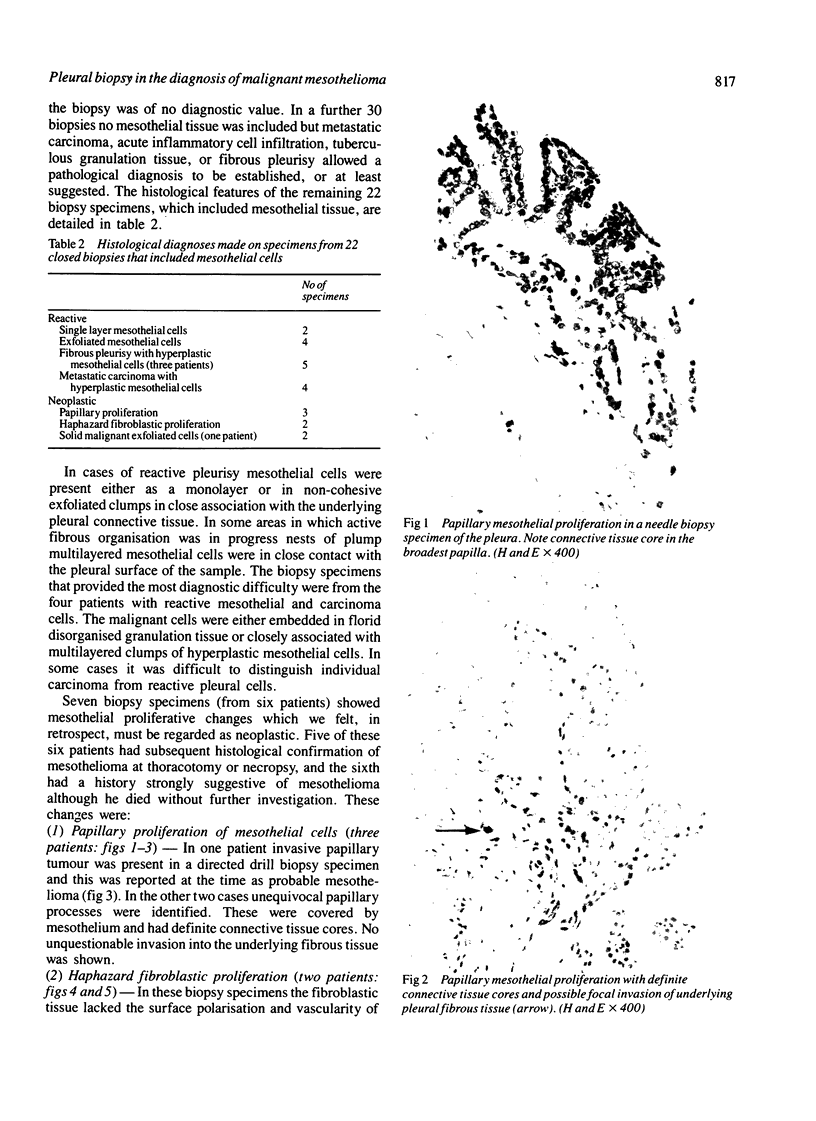
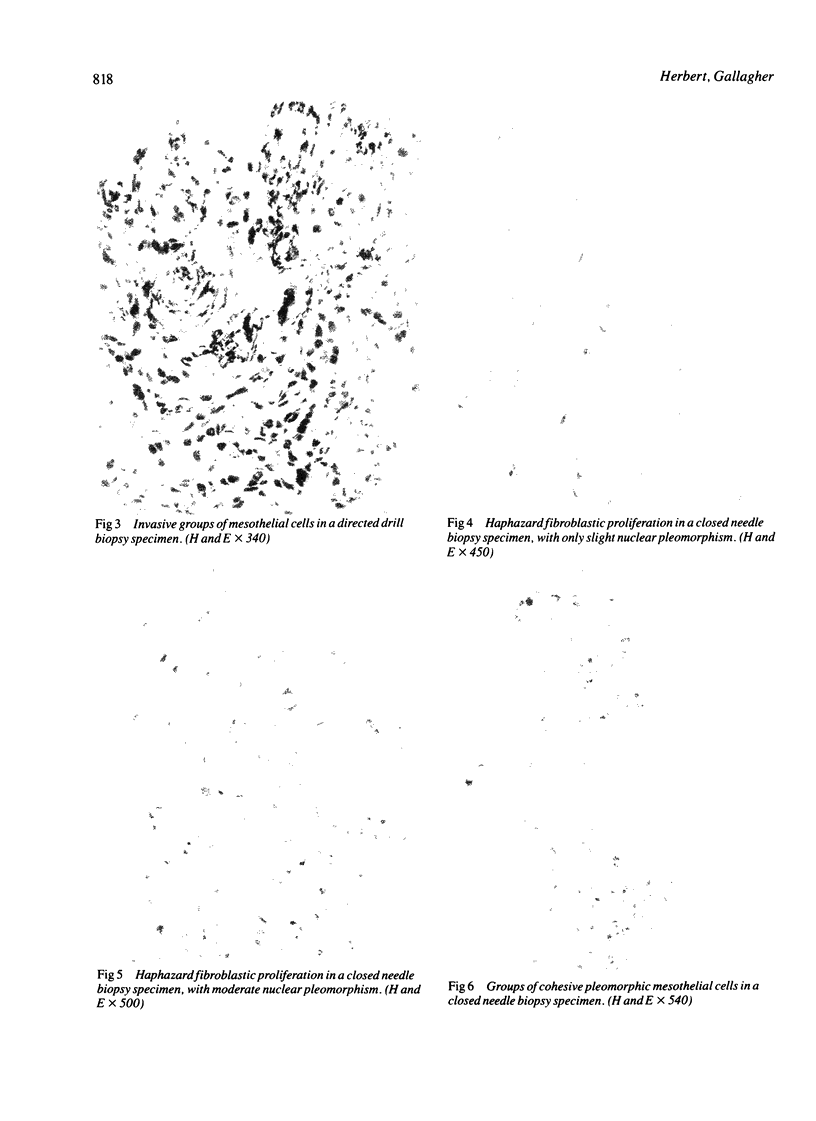

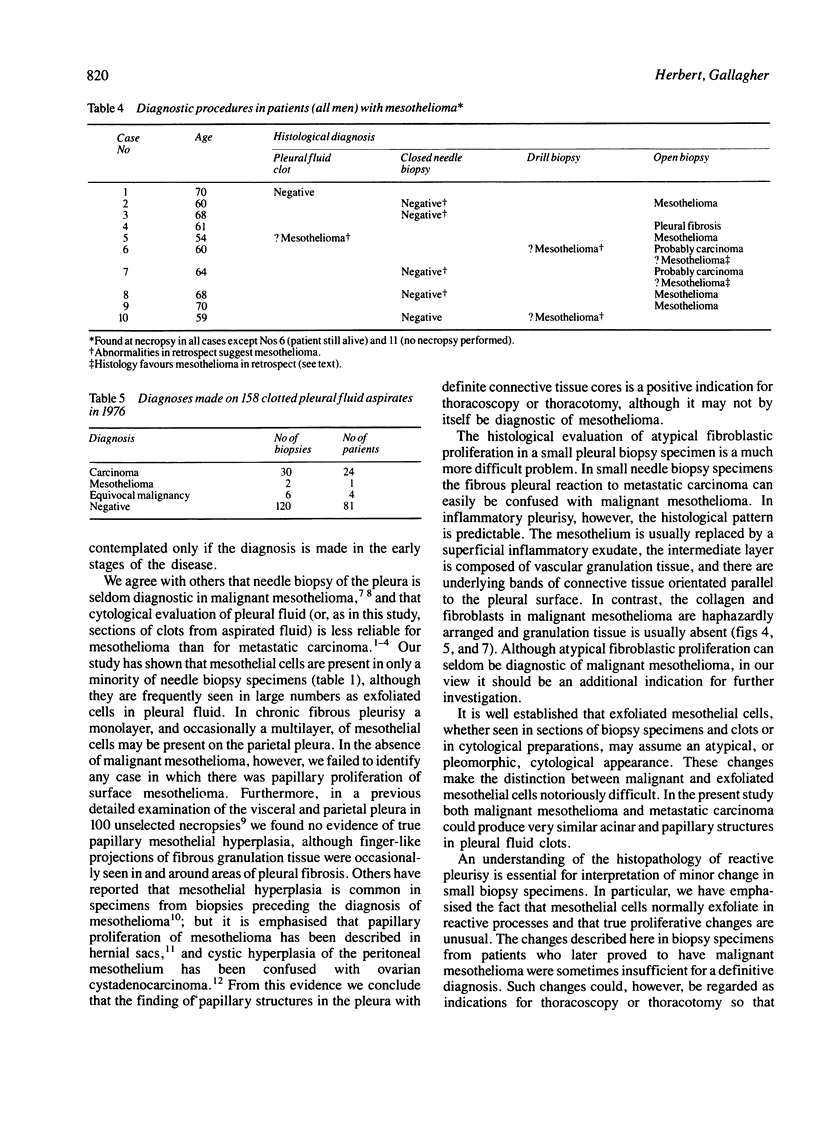
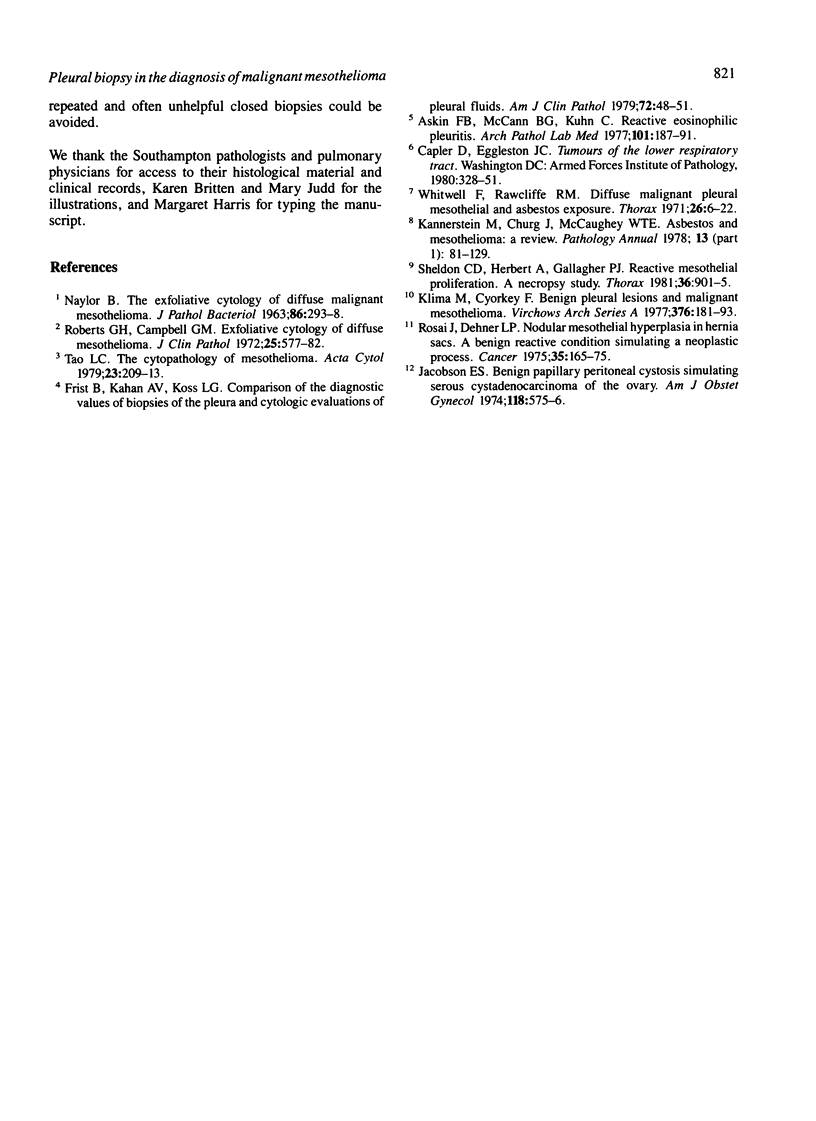
Images in this article
Selected References
These references are in PubMed. This may not be the complete list of references from this article.
- Askin F. B., McCann B. G., Kuhn C. Reactive eosinophilic pleuritis: a lesion to be distinguished from pulmonary eosinophilic granuloma. Arch Pathol Lab Med. 1977 Apr;101(4):187–191. [PubMed] [Google Scholar]
- Frist B., Kahan A. V., Koss L. G. Comparison of the diagnostic values of biopsies of the pleura and cytologic evaluation of pleural fluids. Am J Clin Pathol. 1979 Jul;72(1):48–51. doi: 10.1093/ajcp/72.1.48. [DOI] [PubMed] [Google Scholar]
- Jacobson E. S. Benign papillary peritoneal cystosis simulating serous cystadenocarcinoma of the ovary. Am J Obstet Gynecol. 1974 Feb 15;118(4):575–576. doi: 10.1016/s0002-9378(16)33708-5. [DOI] [PubMed] [Google Scholar]
- Kannerstein M., Churg J., McCaughey W. T. Asbestos and mesothelioma: a review. Pathol Annu. 1978;13(Pt 1):81–129. [PubMed] [Google Scholar]
- NAYLOR B. THE EXFOLIATIVE CYTOLOGY OF DIFFUSE MALIGNANT MESOTHELIOMA. J Pathol Bacteriol. 1963 Oct;86:293–298. doi: 10.1002/path.1700860204. [DOI] [PubMed] [Google Scholar]
- Roberts G. H., Campbell G. M. Exfoliative cytology of diffuse mesothelioma. J Clin Pathol. 1972 Jul;25(7):577–582. doi: 10.1136/jcp.25.7.577. [DOI] [PMC free article] [PubMed] [Google Scholar]
- Rosai J., Dehner L. P. Nodular mesothelial hyperplasia in hernia sacs: a benign reactive condition simulating a neoplastic process. Cancer. 1975 Jan;35(1):165–175. doi: 10.1002/1097-0142(197501)35:1<165::aid-cncr2820350122>3.0.co;2-u. [DOI] [PubMed] [Google Scholar]
- Sheldon C. D., Herbert A., Gallagher P. J. Reactive mesothelial proliferation: a necropsy study. Thorax. 1981 Dec;36(12):901–905. doi: 10.1136/thx.36.12.901. [DOI] [PMC free article] [PubMed] [Google Scholar]
- Tao L. C. The cytopathology of mesothelioma. Acta Cytol. 1979 May-Jun;23(3):209–213. [PubMed] [Google Scholar]
- Whitwell F., Rawcliffe R. M. Diffuse malignant pleural mesothelioma and asbestos exposure. Thorax. 1971 Jan;26(1):6–22. doi: 10.1136/thx.26.1.6. [DOI] [PMC free article] [PubMed] [Google Scholar]




